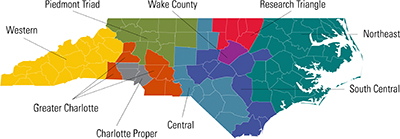The newly revised FDIS 14001-2015 is projected to be in the final “ISO” stage in September of 2015. Are you ready to transition from the current 2004 version? Read on to find out.
Major proposed changes:
1) Understanding the Organization and its context. This element requires the organization to identify its context by determining the following, as relevant to the EMS:
- External circumstances – political, regulatory, international, national, etc.
- Internal characteristics – i.e., strategic direction, culture, capabilities
- Environmental conditions that could affect the organization – climate, natural resource availability, etc.
2) Understanding the Needs of Interested Parties. This requires the organization to determine:
- Interested parties. Who are they?
- What are their needs and expectations?
Interested parties would include regulatory agencies, and their needs and expectations would be the legal requirements, or referred to as “compliance obligations,” in the new standard.
3) Leadership and Commitment. The new standard emphasizes leadership, and wants top management to demonstrate its commitment to the EMS. While no documentation is required, auditors will be looking for evidence to show conformance to these requirements.
4) Actions to address Risks and Opportunities. This element requires the determination of risks and opportunities surrounding “context” and interested parties as per Items 1 and 2, above. Warning: This will take some thought.
5) Environmental Aspects of Products – When identifying environmental aspects, the new standard will ask the organization to identify aspects associated with products from a life cycle perspective, and include the life cycle stages that it controls or has influence over. This element may necessitate environmental controls associated with design, use, end of life and disposal.
6) Operational Controls. There is a healthy list of operational controls an organization must implement, including several new ideas:
- Controls for the design and development of product life cycle stages
- Consideration of potential significant impacts on product delivery, use, end of life and disposal
- Environmental requirements for purchasing
There are a lot of things to think about in advance of the standard’s finalization, but IES can work with you today to ensure a smooth transition in the future. Get in touch!
—

Charlie Parrish joined IES in 1998 and assists NC manufacturers in areas including safety, energy, environmental compliance auditing , air quality permitting, emissions testing, industrial waste minimization assessments, energy surveys, and health and safety assessments & training. Charlie has a B.S. in biology (1978) from San Diego State University and an M.S. in environmental engineering (1989) from Virginia Tech University. Charlie received his P.E. license in environmental engineering in 1994.

